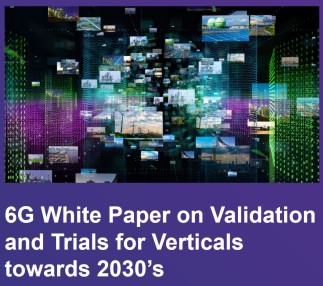In CAMAD 2018, I presented the paper entitled “5GENESIS: The Genesis of a flexible 5G Facility” (PDF), which describes the pathway towards the realisation of a 5G Facility that will allow the validation of the major 5G Key Performance Indicators (KPIs). It reflects the approach that the 5GENESIS consortium will adopt in this direction. More precisely, it describes the key design principles of such Facility as well as the targeted use cases for the KPIs validation. The adopted approach for the Facility realisation includes the design of a common implementation blueprint that will be instantiated in five Platforms distributed across Europe. To maximise the diversity and the efficiency of the Facility, complementary performance objectives have been selected for the Platforms, while specific characteristics from different vertical industries have been allocated to each of them.

he five platforms of the 5GENESIS Facility (Figure 1) and their main features are as follows:
- The Athens Platform provides a shared radio infrastructure (gNBs and small cells) with different ranges and overlapping coverage that is supported by an SDN/NFV enabled core and enabled edge-computing capabilities. It is conceived to showcase scenarios where multimedia content delivery and low latency applications coexist in large public-events.
- The Málaga Platform brings automated orchestration and management of different network slices over multiple domains, on top of the 5G New Radio (NR) access and fully virtualised core network to showcase Mission Critical Services (MCS) running in an Edge Computing platform and outdoor deployments.
- The Limassol Platform offers radio interfaces of different characteristics and capabilities, combining terrestrial and satellite communications, integrated to showcase service continuity and ubiquitous access in underserved areas together with interoperability of IoT components deployed within these areas.
- The Surrey Platform features multiple radio access technologies that can support massive Machine Type Communications (mMTC), including 5G NR and NB-IoT, combined under a flexible Radio Resource Management (RRM) and spectrum sharing platform to showcase massive IoT services.
- The Berlin Platform contains ultra-dense areas covered by various network deployments, ranging from indoor nodes to nomadic outdoor clusters, coordinated via advanced backhauling technologies to showcase immersive service provisioning.
In alignment with the 5G-PPP targets for the experimentation phase of 5G, the 5GENESIS Facility will mainly be used to validate the following performance indicators:
a) Service level Performance Indicators
Data rates. Athens, Limassol, Berlin and Málaga platforms will demonstrate high data rates for eMBB. For example, Málaga will demonstrate the concurrent use of 10 to 20 cameras with real time high quality video in a small area (300m x 300m), with several configurations combining LTE, 5G NR and Optical fibre to balance the traffic distribution.
Reliability and latency. Málaga Platform will demonstrate Mission Critical Services (MCPTT, MCVideo and MCData, based on 3GPP R14) in both lab and outdoor deployments. Although the current KPIs defined by 3GPP in release 13 are not so strict to URLLC applications (e.g. tele-surgery), the same deployments will be used to demonstrate latency <10ms, reliability >99% and availability >99%. Experiments conducted indoor in laboratories could demonstrate even more ambitious performance KPIs.
b) Application level Performance Indicators
The 5GENESIS Facility will be instrumental in also assessing the overall service improvement, by measuring application-level indicators, such as: i) the user-perceived quality of experience (QoE), ii) the impact to the E2E security guarantees.
Quality of Experience. The QoE assessment will be studied in the Athens, Málaga and Berlin Platforms, where Human Type Communications (HTC) are foreseen. The validation concept will involve real end-users in the assessment process combined with objective QoE estimation methods [9]. The Berlin Platform will evaluate the provided network quality over a heterogeneous set of backhauling nodes, using mmWave and optical fibre links. The Málaga Platform will evaluate QoE with the Police Department in the context of Mission Critical Services.
Security. Regarding the security-related assessment, the Athens platform will be responsible for examining the security in a dense urban environment for demanding video services. The goal here is to provide a content delivery framework by taking advantage of the SDN/NFV technologies without affecting security or violating privacy.
c) Network Level Performance Indicators
Coverage. The Limassol platform will demonstrate ubiquitous 5G coverage, with scenarios oriented to maritime communications, rural and underserved areas. The platform will combine satellite communications links with terrestrial backhaul and access technologies, employing advanced link aggregation and optimisation technologies, integrating them all in the overall 5G network.
Density. The Surrey platform will support mMTC in a network of densely distributed NB-IoT and LoRa nodes. In the demonstration event, the platform will be stressed to achieve 1000X simultaneously connected devices, starting with ~1000 real nodes and pushing the system to the limits with additional set of simulated ones.
Network lifecycle management. Performance metrics such as the slice establishment time, the VNF relocation and instantiation times, and the computational resource usage of the cloudified protocol stack, will also be considered. Such metrics will be quantified in the Surrey and Málaga platforms. In this regard, the goal is to exemplify in an E2E fashion the trade-off between the flexibility required in the 5G networking and the constraints and limitations of the virtualization and ETSI MANO frameworks to be used. These measurements will also provide a way to understand the type and benefits of self-adaptable mechanisms that can be put in place to minimise the gap between the flexibility and constraints provided by virtualisation.
 The second visionary 6G research white paper/pre-print on “Validation and Trials for Verticals towards 2030” is now available online by the 6GFlagship.
The second visionary 6G research white paper/pre-print on “Validation and Trials for Verticals towards 2030” is now available online by the 6GFlagship. 
